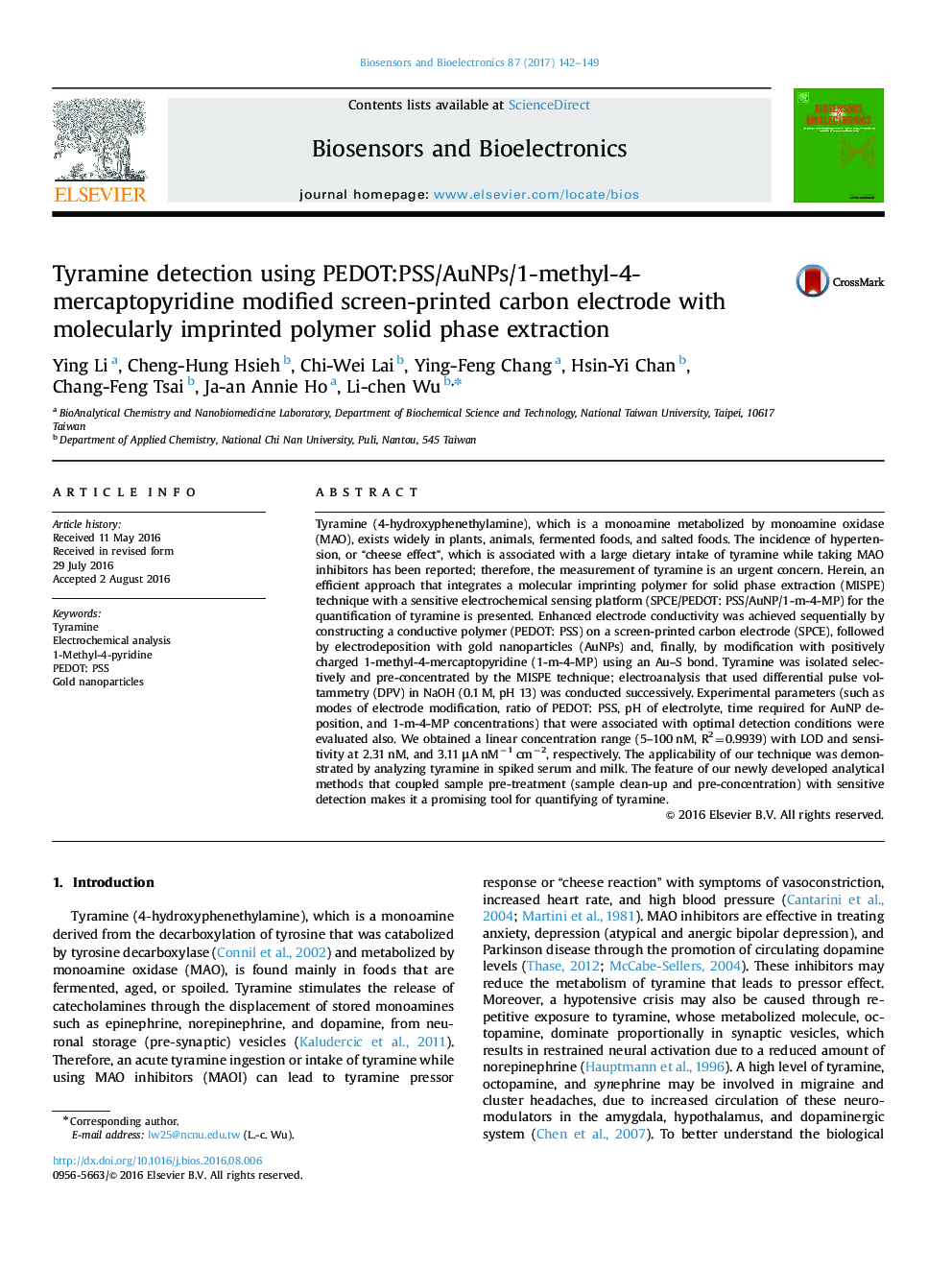| Article ID | Journal | Published Year | Pages | File Type |
|---|---|---|---|---|
| 866171 | Biosensors and Bioelectronics | 2017 | 8 Pages |
●MIP technique coupled with electrochemical approach for tyramine analysis.●PEDOT:PSS/AuNP/1-methyl-4-mercaptopyridine (1-m-4-MP)/SPCE was used for detection.●1-m-4-MP interacted with tyramine phenolate anion at alkaline condition.●Acceptable linear detection range, improved sensitivity and LOD.
Tyramine (4-hydroxyphenethylamine), which is a monoamine metabolized by monoamine oxidase (MAO), exists widely in plants, animals, fermented foods, and salted foods. The incidence of hypertension, or “cheese effect”, which is associated with a large dietary intake of tyramine while taking MAO inhibitors has been reported; therefore, the measurement of tyramine is an urgent concern. Herein, an efficient approach that integrates a molecular imprinting polymer for solid phase extraction (MISPE) technique with a sensitive electrochemical sensing platform (SPCE/PEDOT: PSS/AuNP/1-m-4-MP) for the quantification of tyramine is presented. Enhanced electrode conductivity was achieved sequentially by constructing a conductive polymer (PEDOT: PSS) on a screen-printed carbon electrode (SPCE), followed by electrodeposition with gold nanoparticles (AuNPs) and, finally, by modification with positively charged 1-methyl-4-mercaptopyridine (1-m-4-MP) using an Au–S bond. Tyramine was isolated selectively and pre-concentrated by the MISPE technique; electroanalysis that used differential pulse voltammetry (DPV) in NaOH (0.1 M, pH 13) was conducted successively. Experimental parameters (such as modes of electrode modification, ratio of PEDOT: PSS, pH of electrolyte, time required for AuNP deposition, and 1-m-4-MP concentrations) that were associated with optimal detection conditions were evaluated also. We obtained a linear concentration range (5–100 nM, R2=0.9939) with LOD and sensitivity at 2.31 nM, and 3.11 μA nM−1 cm−2, respectively. The applicability of our technique was demonstrated by analyzing tyramine in spiked serum and milk. The feature of our newly developed analytical methods that coupled sample pre-treatment (sample clean-up and pre-concentration) with sensitive detection makes it a promising tool for quantifying of tyramine.
